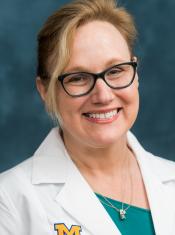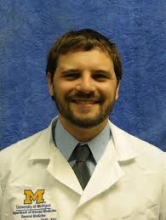The FAITH study (Faith-Based Approaches in the Treatment of Hypertension) has portrayed how a community-based lifestyle intervention delivered in churches can lead to a significantly greater reduction in systolic BP in hypertensive blacks in comparison with Health Education (HE) alone. The results were published online in Circulation.
Mistrust of the medical establishment due to historical reasons amongst non-Hispanic black men has led to an increased prevalence of undetected hypertension. Despite being disproportionately burdened by the disease as compared to any gender or racial group in the US, black men have the lowest physician interaction rates. Furthermore, black Americans experience higher rates of poorly controlled hypertension and related complications, including kidney disease and stroke, than white Americans. Indeed, hypertension explains most of the racial gap in mortality between black and white adults in the United States. Therapeutic lifestyle change (TLC) is a recommended treatment for patients with hypertension, but its effectiveness in community-based settings remains untested, particularly in black churches—an influential institution for health promotion in black communities. Earlier, the results of a cluster-randomized trial conducted in black barbershops were published in the New England Journal of Medicine by Victor and his colleagues from Los Angeles, California. The study showed that health promotion by barbers along with medication management in barbershops by pharmacists resulted in a larger blood pressure reduction in black male barbershop patrons with uncontrolled hypertension as compared to lifestyle modifications and doctor appointments. The trial showcased that two promising strategies to increase trust, engagement, and access to hypertension care and self-management are to bring health care programs to community settings and to have trusted individuals deliver the programs. A church could be likened to a barbershop, which is a comfortable, relaxed environment where there was information exchange. The thought was to go into this comfortable environment and do health outreach. Keeping this in mind, Schoenthaler et al. conducted the Faith-based Approaches in the Treatment of Hypertension (FAITH) in Blacks study, a church-based program in New York. In this cluster randomized trial, 32 black churches were randomized so that their parishioners received 1 of 2 church-based interventions: eleven 90-minute weekly sessions of an evidence-based therapeutic lifestyle change program delivered by trained fellow parishioners to promote healthy behaviors followed by 3 monthly sessions; or 1 therapeutic lifestyle change session followed by 10 sessions on health topics, led by outside health experts.

“Both studies significantly advance the field of intervention research targeting access to health care of high-risk populations. They both show the effectiveness of using trusted members of the community to deliver care. They reinforce the value of reaching out to communities who have limited access or do not trust the medical community, especially communities who have excellent reason to feel that distrust. They also point to the need to include lessons from these and other community-based trials on how to create the necessary links between community and healthcare organizations to engage difficult to- reach communities.”- Dr. Michele Heisler, M.D.
Schoenthaler and his colleagues conducted The FAITH study (Faith-Based Approaches in the Treatment of Hypertension) involving 373 participants to assess the comparative effectiveness of a TLC intervention plus motivational interviewing (MINT) sessions versus health education (HE) alone, on blood pressure (BP) reduction among blacks with uncontrolled hypertension. Data were collected on subjects meeting eligibility criteria (self-identification as black, age ≥18 years, self-reported diagnosis of hypertension, and uncontrolled BP [BP ≥140/90 or ≥130/80mm Hg with diabetes mellitus or chronic kidney disease]) from 32 New York City churches. The MINT-TLC intervention plus motivational interviewing treatment comprised 11 weekly group sessions on TLC plus 3 MINT sessions delivered monthly by lay health advisors. The HE control group received 1 TLC session plus 10 sessions on health topics delivered by local experts. The outcomes were BP reduction at 6 months (primary) and BP control and BP reduction at 9 months (secondary). The sample mean age was 63 years; 76% women, with mean BP of 153/87 mm Hg. Using linear mixed-effects regression models, the MINT-TLC intervention plus motivational interviewing group had a significantly greater systolic BP reduction of 5.79 mm Hg compared with the HE group at 6 months (P=0.029). The treatment effect on systolic BP persisted at 9 months but had reduced significance (5.21mm Hg; P=0.068). It was noted that the between-group differences in diastolic BP reduction (0.41 mm Hg) and mean arterial pressure (2.24 mm Hg) at 6 months were not significant. Although the MINT-TLC intervention plus motivational interviewing group had greater BP control than the HE group at 9 months, the difference was not statistically significant (57.0% versus 48.8%; odds ratio, 1.43; 95% CI, 0.90–2.28).
In an accompanying editorial, Dr. Jeremy B. Sussman, and Dr. Michele Heisler compared and contrasted the effects reported in the FAITH study with the stunning findings in the barbershop study. They could pinpoint several reasons that could explain the difference in outcomes. First, the studies used different interventions. While behavioral change alone, like that encouraged by the FAITH Study, had many benefits, it was a more difficult way to lower blood pressure than medication management. Second, the barbershop trial achieved significantly higher levels of participant engagement in the intervention. Participants in the barbershop program received on average 7 in-person pharmacist visits and 4 follow-up telephone calls. In contrast, in the FAITH trial, only 46% of intervention participants completed all 3 of the individual telephone counseling sessions. Third, although both trials enrolled predominantly low-income black adults, there were important differences in their participants. The barbershop study exclusively enrolled men who had at least 1 haircut every 6 weeks for at least 6 months. The FAITH study participants were primarily women, but they may or may not have attended the church regularly. These differences in eligibility criteria also explained why the barbershop trial achieved a remarkably low attrition rate (<10% in each arm) at 6 months, whereas the FAITH trial only had complete data on 71% of participants at 6 months, a rate similar to other trials of low-income urban populations.

“These studies demonstrate how far the US medical system has to go to provide care that is fair to underserved and vulnerable populations. For black patients especially, the larger problems that cause health disparities remain fundamental reflections of differences in our broader society. As long as black Americans receive worse care and have lower access to tests and treatments, community-based efforts will be essential.”- Dr. Jeremy B. Sussman, M.D.
Despite these key differences, they stated, “Both studies significantly advance the field of intervention research targeting access to health care of high-risk populations. They both show the effectiveness of using trusted members of the community to deliver care. They reinforce the value of reaching out to communities who have limited access or do not trust the medical community, especially communities who have excellent reason to feel that distrust. They also point to the need to include lessons from these and other community-based trials on how to create the necessary links between community and healthcare organizations to engage difficult to- reach communities.” Speaking in a broader sense, they added, “These studies demonstrate how far the US medical system has to go to provide care that is fair to underserved and vulnerable populations. For black patients especially, the larger problems that cause health disparities remain fundamental reflections of differences in our broader society. As long as black Americans receive worse care and have lower access to tests and treatments, community-based efforts will be essential.”



Leave a Reply
You must be logged in to post a comment.